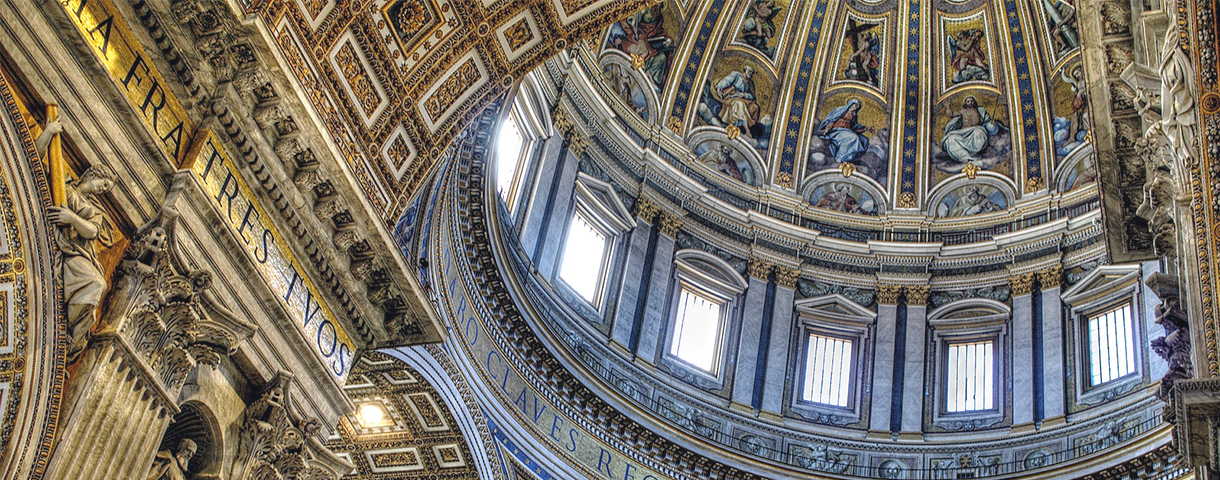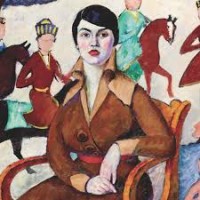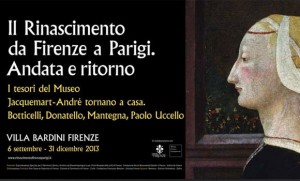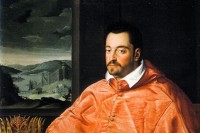By Chelisse Perry (LdM Institute)
Open from 27 September 2013 to 19 January 2014, the current exhibition is curated by John Bowlt, Nicoletta Misler, and Evgenija Petrova, and has been a work in progress since the early 1990s. It is an international exhibition that discusses the important thematic relationship between Orientalism and Russian Modernism. The subtitle, Fire and Ice is a metaphor for the exhibit, which contrasts the fiery blaze of the Oriental style with the icy Russian style. Ice refers to the stagnant traditional standards of art while fire refers to the pagan ecstasy of the primitive style that permeated the art world of the twentieth century. Consequently, these works encompass Russian, Caucasian, Artic and Asian artistic interactions during the Avant-guard movement.
The exhibition begins with an in depth description of the art and culture that blossomed from these modernist artists who understood and were inspired by exotic Orientalism and the unknown. The large text panel, adjacent to the entrance, summarizes the cultural relationship between Russia and the East and the art that ensued. The first room is both breathtaking and instructive, and it includes various examples of Russian art throughout the centuries. At the entrance, a colossal stone statue dating from the thirteenth century, titled Kamennaia baba, overcomes the viewer. After adjusting to the atmosphere, you are greeted by many paintings including: Leon Bakst’s Terror Antiquus 1908, a monumental painting depicting a Grecian background and a Greek Kore in the foreground; as well as Aleksei Steponov’s Wolves by Night 1912, depicting a pack of wolves on a snowy landscape.
Spotlighting throws the art into high relief, creating a stimulating setting. The pathway is clear because each room is a precursor for the next. It takes the visitor on a journey through the Russian interactions with India, China, Siam, Greece and Japan. To note, Russian-inspired works are displayed on white backgrounds, Eastern-inspired works on grey. At the end of the exhibit, the visitor arrives as a distinctive Russian idiom; when these Avant-garde artists discover a true Russia modernist style. The rooms, incidentally, are titled based on their relationship and organization. Effigies of Wisdom Emissaries of the Cosmos, Gestures and Rituals, The Presence of the Forest, all reflect upon the spiritual and natural elements of the primitive style that flooded through the Avant-garde. Pavel Filonov incorporated cosmic entities into his works: Formula of the Period 1904-July 1922 Universal Shift in the Flowering of the World via the Russian Revolution (formerly entitled Cosmos). Konstantin Korovin includes arctic material landscapes in his friezes Remains of a Samoed Encampment. These complimented the objects used in Russian native rituals; Deer horns from a ritual site and Bear Skull on a Ritual Celebratory Spoon.
A large text panel, in both English and Italian, accompanies each work of art. The text is large enough to allow the viewer to admire the works and read the descriptions simultaneously. Many renowned Russian artists are on display; among them are Vasilii Kandinsky, Kazimir Malevich, Pavel Filonov, Natalia Gonchardova, Leon Bakst, and others. The rooms are very well organized, stimulating and thought provoking.
The exhibit is rich and well represented and a second visit is invaluable. After purchasing a ticket, it is valid for one month.
Text booklets are available in Russian, Italian, English and Chinese and exhibition texts are available on the website in multiple languages.
http://www.palazzostrozzi.org/SezioneAvanguardiaRussa.jsp?idSezione=2549
L’Avanguardia russa. La Siberia e l’Oriente: fuoco e ghiaccio
Chelisse Perry (LdM Institute)
La mostra in corso a Palazzo Strozzi, aperta dal 27 settembre 2013 al 19 gennaio 2014 e curata da John Bowlt, Nicoletta Misler e Evgenja Petrova, è stata pensata fin dagli anni Novanta, sviluppandosi nel tempo fino ad arrivare al risultato che si può vedere oggi. Si tratta di una mostra a livello internazionale che affronta il rapporto tra l’Oriente e l’Avanguardia Russa. Il sottotitolo, Fuoco e Ghiaccio, riflette la metafora dell’approccio “freddo” dell’arte russa opposto allo stile “focoso” dell’arte orientale; a tal punto che la parola ghiaccio si riferisce anche alla stagnante tradizione dell’arte russa mentre la parola fuoco si riferisce all’estasi pagana caratteristica del primitivismo, stile che pervadeva l’arte del ventesimo secolo. Di conseguenza le opere esposte aiutano il visitatore a mettere in relazione l’arte russa, caucasica, artica e asiatica durante l’Avanguardia.
La mostra comincia con un’approfondita descrizione dell’arte e della cultura che fiorirono da quegli artisti che capirono e furono ispirati dall’oriente esotico e dall’ignoto.
Un grande pannello, adiacente all’entrata, illustra in modo sintetico la storia di come è nata la mostra e le relazioni culturali fra la Russia, l’Oriente e l’arte che ne deriva.
La prima sala è sorprendente e allo stesso tempo istruttiva e contiene diversi esempi di opere dell’arte russa attraverso i secoli. Appena entrati infatti, una colossale statua di pietra intitolata Kamennaja baba, datata al XIII secolo, sovrasta il pubblico. Dopo essersi adattati all’atmosfera della prima sala, i visitatori sono accolti da numerosi dipinti di diverso contenuto che forniscono una breve introduzione all’esposizione.
Le luci, focalizzate sulle opere, sono stimolanti e creano un ambiente rilassante e minimale che invita il visitatore a osservare attentamente i pezzi in mostra.
Il percorso espositivo è chiaro e ingegnoso; l’allestimento permette un flusso graduale attraverso le sale che consente di apprezzare sia le opere di ispirazione russa che quelle di ispirazione orientale. Un interessante accorgimento per distinguere le diverse correnti consiste nel mostrare le opere russe su pannelli di colore bianco, mentre quelle orientali sono poste su pannelli di colore grigio.
Un grande pannello esplicativo, scritto sia in inglese che in italiano, accompagna ogni opera e, grazie alle sue dimensioni, il visitatore può fermarsi ad una certa distanza dall’oggetto per ammirarlo nella sua interezza e, allo stesso tempo, leggerne la descrizione fornita.
Molti artisti famosi, citati nei dépliants della mostra, sono qui esposti come Vasili Kandinsky, Kazimir Malevic, Pavel Filonov, Natalia Gonchardova, Leon Bakst, e molti altri.
Le sale sono ben organizzate e stimolanti; tra l’altro sono intitolate in base alle opere presentate e ai contesti a cui queste sono legate, come si può riscontrare nelle sale Effigi di saggezza. Gli interpreti del cosmo; Gesti e rituali. Immagini taumaturgiche e Le presenze dalla foresta, le quali riflettono tutte sulle componenti naturali e spirituali dello stile primitivista che inondano l’Avanguardia Russa. Molti artisti, come Pavel Filonov, incorporano entità cosmiche nei loro quadri; così come nei pannelli di Konstantin Korovin sono compresi paesaggi artici e composizioni che integrano gli oggetti rituali dei nativi esposti in mostra.
Una volta terminata la visita, ci si sente illuminati e ben informati; essa è ricca, ben presentata e vale la pena fare una seconda visita.
I booklets sono disponibili in italiano, inglese, russo e cinese e i testi della mostra possono essere scaricati dal sito di Palazzo Strozzi, in numerose lingue.
Per maggiori informazioni, visitare il sito: http://www.palazzostrozzi.org/SezioneAvanguardiaRussa.jsp?idSezione=2496





